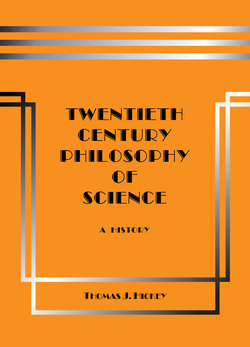Читать книгу Twentieth-Century Philosophy of Science: A History (Third Edition) - Thomas J. Hickey - Страница 111
На сайте Литреса книга снята с продажи.
Scientific Explanation
ОглавлениеMach set forth his theory of scientific explanation in many places including his Analysis of Sensations, his “The Economical Nature of Physical Inquiry” (1882) and “On the Principle of Comparison in Physics” (1894) reprinted in his Popular Scientific Lectures (1898). He says that explanation is the economical description of experience in terms of elements. When we examine facts for the first time they appear confusing. In time we discover simple stable elements out of which we can mentally construct the entire factual domain, and when we have reached the point where everywhere we can discuss the same facts with other persons, then we no longer feel lost and the phenomenon is explained. The explanation offers a survey of a given domain of facts with the least expenditure of thought. The representation of all the facts of a domain by one single mental process is economical. He adds that the greatest perfection in mental economy occurs when science uses mathematics.
Not all descriptions are explanations; only direct descriptions can be explanations, while theories on the other hand are indirect descriptions and are not explanations. Direct descriptions may be either complete or incomplete. Description of what is presently observed is a complete description. Incomplete description refers to what is presently unobserved but observable and what is associated by a law, as for example the movement of a comet that is presently unobserved or the body of a man who disappears behind a pillar. The incomplete description can be completed by the human mind by means of the associations made by a scientific law. A direct description is one in which a single feature of resemblance among facts is called from memory, while a theory such as the description of light as a wave motion is an appeal to another description that had previously been made elsewhere. A theoretical idea offers more than what we actually observe in a new fact. It can be used to extend a fact and enrich it with features, which we are firstly induced to seek from its suggestions and, which are often actually found. A theory may lead to discoveries, but the adoption of a theory always carries a danger: even the most fruitful theory may be an obstacle to inquiry. By way of example Mach says the theory that light is an undifferentiated straight line of particles impeded the discovery of the periodicity of light. The ideal of a given domain of facts is direct description; such description accomplishes all that the scientific investigator could wish.
